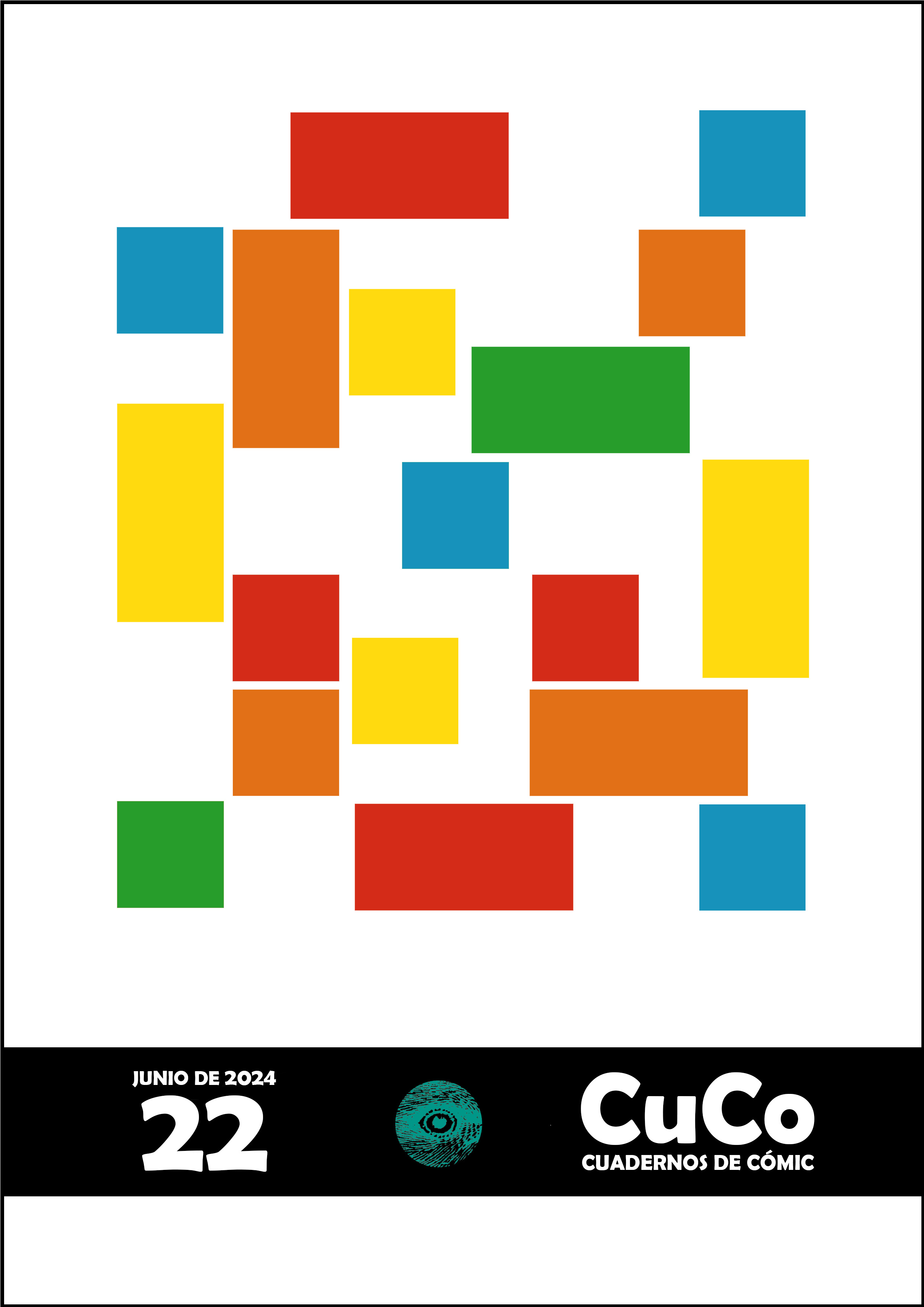Publicado 2024-07-08
Palabras clave
- Alison Bechdel,
- interdependencia,
- feminismo,
- trascendentalismo,
- género
Cómo citar
Derechos de autor 2024 Mara González de Ozaeta

Esta obra está bajo una licencia internacional Creative Commons Atribución-CompartirIgual 4.0.
Resumen
Este ensayo aprovecha la presencia del concepto interdependencia para analizar su origen y cómo se aplica en el cómic autobiográfico El Secreto de la Fuerza Sobrehumana (2021) de Alison Bechdel y en la práctica feminista. Inicialmente sirve de coordenada entre el hinduismo, el budismo, la literatura de evasión, el trascendentalismo y la contracultura, pero en su último cómic, Bechdel lo usa para conectar los hitos autobiográficos que acabaron por forjar su identidad como artista y como propuesta feminista. Se plantea aquí la posibilidad de que Alison Bechdel descubriera en la persecución y conquista de dicho hito, una verdad subyacente a la cuestión de la mujer en la sociedad occidental. No obstante, este cómic es sobre dicha lucha y la de aquellas que quisieron recorrer, antes que ninguna de nosotras, dichos parajes. Entre aquellas, escritoras y líderes del movimiento feminista como Margaret Fuller, Dorothy Coleridge, Betty Friedan, Judith Butler, Virginia Woolf; etc.
Con sus viñetas, Bechdel reivindica el valor y las dificultades de alcanzar dicha interdependencia para las mujeres artistas, activistas y exploradoras a lo largo de su vida y durante las diferentes olas del feminismo en el contexto de los EE. UU, al tiempo que ella misma asume conquistar esa meta que por fin le brinde la fuerza sobrehumana. Para ello, la intertextualidad; es decir, el diálogo entre este y otros textos en sus viñetas también juega un papel muy importante cuyo fin es acomodar el sujeto mujer al ideal Emersoniano, a pesar de que él, Ralph Waldo Emerson, tuviera otros planes para nosotras.
Descargas
Citas
- BECHDEL, Alison. El Secreto de la Fuerza Sobrehumana, Barcelona, Reservoir Books, 2021.
- _. Fun Home. Una familia tragicómica, Barcelona, Reservoir Books, 2006.
- _. «Alison Bechdel Seeks Self-Understanding Through Exercise» en GOLDSMITH, S. Colombus Monthly [entrevista] 28/09/2021 Disponible en: https://eu.columbusmonthly.com/story/lifestyle/features/2021/09/28/alison-bechdel-author-fun-home-seeks-superhuman-strength/5909680001/
- BIRKE, L. I. A. Feminism and the biological body. New Brunswich, NJ: Rutgers University Press, 1999.
- BLOOM, H. La ansiedad de la influencia. Una teoría de la poesía. Madrid: Trotta, 2009.
- BUTLER, J. El Género en Disputa Barcelona: Paidos Iberica, 2007.
- _. Notes Toward a Performative Theory of Assembly. Massachusetts: Harvard University Press, 2015.
- _. Lenguaje y Poder, Madrid: Síntesis, 2004.
- COLERIDGE, S.T. The Complete Poetical Works of Samuel Taylor Coleridge. Vol. 1 and 2. [ebook] Gutenberg.org, 2009.
- DUNNE, Maryjane «The Representation of Women in Comic Books, Post WWII Through the Radical 60’s» PSU McNair Scholars Online Journal: Vol. 2: Iss. 1, 2006.
- EMERSON, R. W. Woman. A Lecture Read Before the Woman's Rights Convention, September 20, 1855, en SACKS, K. S. (ed.) Political Writings. Cambridge: Cambridge University Press, 2008.
- https://archive.vcu.edu/english/engweb/transcendentalism/authors/emerson/essays/woman.html
- FREUD, S. Introducción al Narcisismo y Otros Ensayos, Madrid: Alianza Editorial, 2005.
- FRIEDMAN, B. La Mística de la Feminidad, Madrid: Cátedra, 2009.
- FULLER, M. “Women in the Nineteenth Century”: The Complete Works of Margaret Fuller. E-book ed. Praha, Czech Republic: Madison & Adams Press, 2018.
- GILBERT, S. M. The Madwoman in the Attic: The woman writer and the nineteenth century imagination. New Haven and London: Yale University Press, 2000.
- GOUGEON, L. «Emerson and the Women Question: the Evolution of His Thought» en The New England Quarterly, vol. 71, no. 4, pp. 570–92. JSTOR, https://doi.org/10.2307/366603, 1998.
- GROSZ, E. Volatile Bodies: Toward a Corporeal Feminism. Bloomington: Indiana University Press, 1994.
- HUMBERSTONE, B. «Re-creation and connections in and with nature: Synthesizing Ecological and Feminist Discourses and Praxis?» en International Review for the Sociology of Sport, 33(4), 381–392. https://doi.org/10.1177/101269098033004005, 1998.
- PAREL, A. J. (2008). Gandhi and the Emergence of the Modern Indian Political Canon. The Review of Politics, 70(1), 40–63. http://www.jstor.org/stable/20452956
- POPOVA, M. «The Secret to Superhuman Strength: Alison Bechdel’s Illustrated Meditation on the Life of the Body, the Death of the Self, and Our Search for Meaning» en The Marginalian 01/01/2022.
- PRECIADO, P. B. Dysphoria Mundi, Barcelona: Anagrama, 2020.
- QUINAN, C. Doing gender in media, art and culture: A comprehensive guide to gender studies, edited by Rosemarie Buikema, et al., Routledge, 2017.
- WATSON, J. «Autographic disclosures and genealogies of desire in Alison Bechdel’s “Fun Home.” » Biography, 31(1), 27–58, 2008. http://www.jstor.org/stable/23540920
- ZWARG, C. “Introduction: Fuller, Emerson, and the Task of Reading”, Feminist conversations: Fuller, Emerson, and the play of reading, Cornell University Press, 1995, p. 1 http://www.jstor.org/stable/10.7591/j.ctv1nhmpq.5. Accessed 16 Mar. 2023

